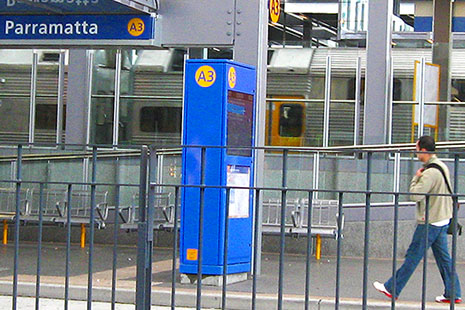ONE of the more surprising newspaper stories of recent times was Peter Martin’s article of 15 November, OECD Takes Aim at Labor Policies, which reported that the latest OECD Economic Survey of Australia had declared that Australia’s unemployment benefits are too low. I can’t recall the OECD ever before saying that a country’s unemployment benefits weren’t generous enough – and I worked there for eight years.
According to the OECD, the current level of the Newstart Allowance has “raised concerns about its adequacy” as an income-support payment. “Unlike most OECD countries,” says the report, “Australia provides a flat (non-earnings related) means-tested allowance to meet social risks such as unemployment, which may be paid for an unlimited period... The resulting net replacement rate is below the OECD average for the initial stage of unemployment.” In fact, for single people on the average wage losing their job, Australian benefits are about the lowest in the OECD.
Currently, single unemployed adults receive about $470 per fortnight, or $33.55 per day. If they’re renting privately, they’re entitled to up to $115 per fortnight in rent assistance, but to get that amount their rent has to be more than $256 per fortnight, leaving them with just $23.50 per day for everything else; and that assumes you can find somewhere to rent for $256 a fortnight. Earlier this year the NSW government’s Rent and Sales Report found that in early 2010 the cheapest one-bedroom homes in Sydney’s outer ring were in Wyong and Gosford and cost “just” $170 a week. If you were on Newstart and paying that rent you would have just $17.50 a day left over for your food, clothing, transport and other bills.
In September 2009, the federal government increased the single rate of age pension by more than $30 per week – one of the largest pension increases in Australian history. The decision was based on the recommendations of the Harmer Review, which argued that “the relativity of the rate of pension for single people living by themselves to that of couples is too low… [and] there is strong evidence that many pensioners in private rental housing face particularly high costs and have poor outcomes.”
In making its recommendations the Harmer Review cited research by Peter Saunders and Melissa Wong of the Social Policy Research Centre, or SPRC, who looked at the relative well-being of pensioners using measures of deprivation and social exclusion to complement measures of cash incomes. But Harmer was not asked to look at the adequacy of benefits for the unemployed. Earlier research at the SPRC found that the unemployed were even more likely than age pensioners to face deprivation and exclusion and have difficulties managing on their incomes.
The Henry Review of the tax system also pointed out that Australia could benefit from a more principles-based approach to setting payment levels. “Establishing adequacy benchmarks for transfer payments not considered in the Pension Review would make the system more robust, particularly if the benchmarks were preserved through a common but sustainable indexation arrangement.” This “would mean an increase to base rates for single income support recipients” on Newstart. The review also recommended that the maximum rate of rent assistance should be increased and the rent maximum should be indexed by movements in national rents.
So, both the OECD and the official inquiry into Australia’s tax and benefit system think that unemployment benefits are too low. Part of this concern is actually about incentives, particularly those that arise from the gap between Newstart and the more generous Disability Support Pension. “The large gap between the benefits in the current system can reduce incentives to work,” the OECD argues. “The unemployed may have an incentive to apply for the Disability Support Pension (DSP), which has a higher risk of long-term welfare dependency... the majority of those leaving DSP do so either because they took up Age Pension or died. At the same time, more than a third of those entering DSP in 2008 had previously had Newstart Allowances.”
The 2009 increases in pensions widened the gap between payments for the unemployed and payments for lone parents with children eight years and over, for people with disabilities and for carers, to the point where the Newstart shortfall is nearly $250 per fortnight. A lone parent who moves from Parenting Payment to Newstart when his or her youngest child turns eight can lose up to $100 each fortnight. As the system is currently configured these gaps will grow over time.
The 2010 Intergenerational Report helps us gauge the scale of the future problem. Under current indexation policies, age, carers and disability pensions are indexed to wages, while most other payments for people of working age and families are indexed to prices. If continued, these provisions will produce a remarkable change in levels of support: pensions would rise by 4 per cent a year on average while benefits and allowances would rise by 2.6 per cent a year. The result – if the indexation provisions actually continued for forty years – would be that in 2050 a single unemployed person would be receiving a payment little more than 11 per cent of the average male wage, compared to about 20 per cent now.
The gap between pensions and allowances would widen enormously, and an unemployed person would be receiving a payment that was less than 40 per cent of the amount received by a disability pensioner (not including the extra concessions and bonuses received by pensioners). Relative poverty among working age allowance recipients would increase significantly.
It is certainly true that the best way to help the unemployed is to get them into jobs. Australia has been very fortunate in having one of the lowest increases in unemployment of any OECD country since 2008, but we shouldn’t overlook the fact that unemployment has still risen significantly. In June 2008 the number of people receiving Newstart Allowance was just under 430,000, its lowest level since the 1980s; this rose to 602,000 in February 2010 and has come down to 557,000 in October this year (the most recent available figure). The number of people on Newstart for twelve months or more rose from 250,000 in late 2008 to around 340,000 in recent months, although this also appears to be now coming down.
Would raising benefits to a more adequate level keep the unemployed out of jobs or even cause low paid workers to give up jobs? Since 1996 the level of Newstart for a single person has fallen from around 54 per cent to 45 per cent of the after-tax minimum wage. If it were still 54 per cent of the net minimum wage, then benefits would be around 19 per cent higher. It is difficult to see that going back to the 1996 relativities between Newstart and the minimum wage would pose serious disincentives to work.
This problem is not going to go away. Current policies are simply going to make the problem more difficult to deal with if decisions are postponed. It is worthwhile remembering that one of the first initiatives of the Hawke government was to increase the rate of unemployment benefits, recognising that lack of consistent indexation had made these payments inadequate. It’s time the current government recognised that unemployment payments need to be increased. •




